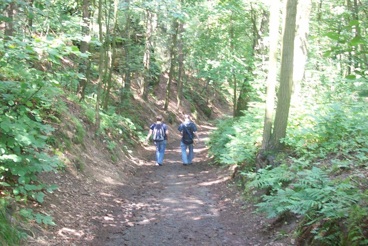
Hiking

Description
Hiking is typically an easily accessible activity that enhances fitness and can help reduce stress.
Aspects to consider for a hiking unit:
-
•Planning & Preparing for a trip
-
-Where are you going? Amount of time? Fitness Levels?
-
-Selecting the correct gear including, backpacks, water bottles, clothing (layers/fabrics), hiking boots (blister prevention/treatment)
-
•Route Finding
-
-Getting “unlost”
-
-Using a GPS
-
•Extreme Environments
-
-High country hiking
-
-Winter/Desert Hiking (not for this unit)
-
•Trail Skills
-
-Using hiking sticks
-
-Crossing creeks and streams
-
-Preserving ecology of trails
Safety

Recommended that AT LEAST 2 adults have first aid, including mouth-to-mouth breathing, CPR, bandaging and splinting.
Survival equipment should be brought on every trip and students should know how to use it:
-
•Maps
-
•Compass
-
•Waterproof matches
-
•Knife
-
•Non-perishable food
-
•Flashlight
-
•First aid supplies
** Hiking in the Greater Victoria area presents many options for different levels of difficulty. Teachers may take students along trails or up mountains; they may want to focus on endurance through long, less difficult terrain or shorter, more difficult terrain. Hiking up/around areas such as Mt. Tolmie and Thetis Lake are more beginner type hikes. Mt. Finlayson presents possibilities for a more advanced hike.









